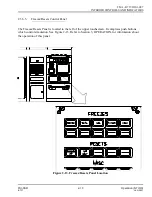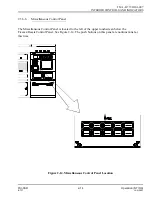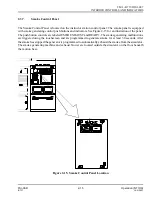
1.5.6.
Seats
The instructor’s seat is located behind the cockpit, next to the Instructor Station console. It is cushioned
and has lockable adjustments. An additional seat is positioned to allow an observer to view the student’s
training.
1.5.7.
Cockpit Management Monitor System
The simulator is equipped with the Cockpit Management Monitor System (CMMS). This system includes
a video and audio recording system that allows the instructor to record training sessions for later review.
The video recorder is usually located in a cabinet at the lower left of the instructor work surface and the
video camera is positioned between the pilot and co-pilot stations. The microphones are located within
the cockpit. Control of the CMMS is accomplished through the touchscreens and the video image may
be viewed on the upper monitor.
1.5.8.
Telephone
The simulator is equipped with a telephone on the instructor station. The telephone can be connected to
the site’s telephone system which enables the personnel inside the trainer to communicate with personnel
outside the simulator while the flight training is in progress.
1.6.
SOFTWARE FEATURES
The reactions of the simulator are controlled by programs stored in the host computer. Simulation software
interfaces with simulator hardware devices to generate an accurate representation of an actual flight.
Malfunctions, aircraft sounds, aircraft controls, visual scenes, and communications are controlled through
simulation software.
The touchscreens present displays which can be activated when simulation programs are running. The
instructor uses these screens to control and direct flight simulation.
TM-3-B 737-IOS1-007
SOFTWARE FEATURES
FSI-SSD
1-5
Operation (NT IOS)
B 737
JAN 2001











































